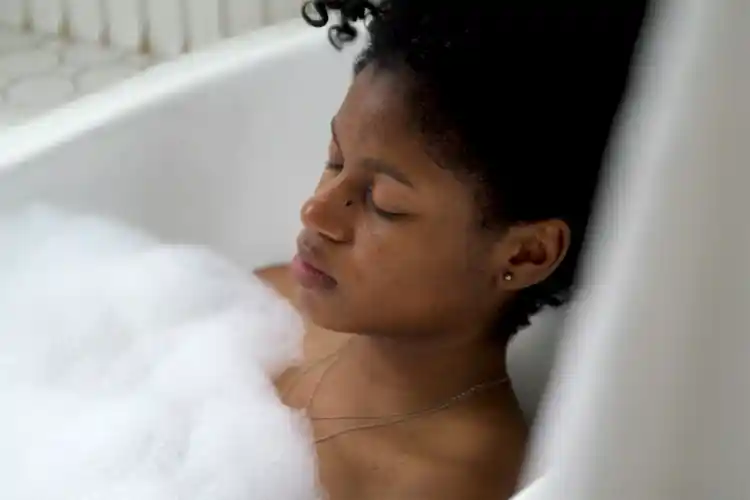Hot and Cold Therapy for RA

Hide Video Transcript
Video Transcript
[MUSIC PLAYING]
This helps your body deliver more blood, oxygen, and other nutrients to the area, and the result is better circulation and more relaxation. Studies show that moist heat is more effective than dry heat because the moisture helps heat penetrate the tissue faster and more effectively. Try using warm showers, warm hot tubs, and heated swimming pools for short sessions.
There's no need to overdo it. You can reap the maximum benefit of the soak after only 20 minutes. Avoid hot tubs and heated pools if you have blood pressure that is too high or low, have heart disease, or if you're pregnant.
No time to jump in the pool? Microwave a wet washcloth in a freezer bag for one minute and apply it to the affected area. Dry heat can help promote relaxation, and it's sometimes more convenient if you are at work or on the go.
Heating pads or microwavable rice bags can do the trick in a pinch, or try a disposable heat patch from the local drugstore. Always check the temperature before using. If it's too hot you could burn your skin, too lukewarm and you won't reap the benefits.
Stay away from heat if you're having a flare or if you have an injury or see swelling or redness. Cold therapy works best if you're having a flare, have swollen joints, or are in acute pain. Cold constricts blood vessels, and in turn numbs pain. It can also relieve inflammation and lead to less bruising.
Try ice packs, a bag of frozen veggies, a bag of ice wrapped in a towel, or even an ice massage where you gently rub an ice cube directly on the painful joint. Both hot and cold therapy give relief by stimulating your body's own healing power in the affected area. Some patients report that alternating sessions with moist heat and ice can provide relief.
SPEAKER
There are many ways to treat the pain and stiffness that come with rheumatoid arthritis. But the easiest and quickest way to get relief at home is with hot and cold therapy. Heat therapy promotes relief. When you apply heat to your sore joints or muscles, it expands your blood vessels. This helps your body deliver more blood, oxygen, and other nutrients to the area, and the result is better circulation and more relaxation. Studies show that moist heat is more effective than dry heat because the moisture helps heat penetrate the tissue faster and more effectively. Try using warm showers, warm hot tubs, and heated swimming pools for short sessions.
There's no need to overdo it. You can reap the maximum benefit of the soak after only 20 minutes. Avoid hot tubs and heated pools if you have blood pressure that is too high or low, have heart disease, or if you're pregnant.
No time to jump in the pool? Microwave a wet washcloth in a freezer bag for one minute and apply it to the affected area. Dry heat can help promote relaxation, and it's sometimes more convenient if you are at work or on the go.
Heating pads or microwavable rice bags can do the trick in a pinch, or try a disposable heat patch from the local drugstore. Always check the temperature before using. If it's too hot you could burn your skin, too lukewarm and you won't reap the benefits.
Stay away from heat if you're having a flare or if you have an injury or see swelling or redness. Cold therapy works best if you're having a flare, have swollen joints, or are in acute pain. Cold constricts blood vessels, and in turn numbs pain. It can also relieve inflammation and lead to less bruising.
Try ice packs, a bag of frozen veggies, a bag of ice wrapped in a towel, or even an ice massage where you gently rub an ice cube directly on the painful joint. Both hot and cold therapy give relief by stimulating your body's own healing power in the affected area. Some patients report that alternating sessions with moist heat and ice can provide relief.
